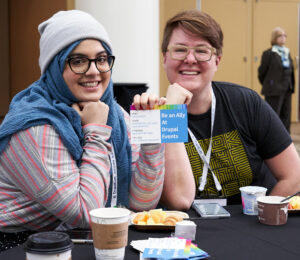Inclusion is currently a topic that is highly debated around the world. The term inclusion was a once powerful word that drove equal access campaigns for students and different abilities, strengths, and challenges. The term inclusion has instead come to be associated with lack of funding, time and supports — a political playing card that has turned our most valuable learners into a burden, defined by ratios and deficits (Moore, 11). Having lived in 3 countries (on 2 different continents) over the past 10 years, I have been able to make connections with individuals across many different cultures which have helped me understand the different needs and expectations that each demographic culture required. Taking Sri Lankan culture for example, a majority of the society is heteronormative and all of my friends who identified as a member of the LGBTQ2SIA community, had to fight for their place in society. While living in Canada, I learned that many organizations exist to support members of these oppressed communities, which is quite contrasting to what I grew up around.
I am currently employed by the university of Victoria as an Team Leader for the New Student Connect Program. This is a mentorship program that was developed to help the incoming first year students to thrive in an online semester in college. The university has hired over 100 student leaders across all of the faculties to assist these new students. By being a part of this program, I was able to further expand my Personalized Learning Network (PLN) and learn from the fresh ideas and opinions the student leaders and new students would have to offer; and this was by communicating internally by using the platform Microsoft Teams, with dedicated channels for information and knowledge sharing purposes among us. This experience has helped me understand and practice the fundamental concepts of inclusion, since being a mentor requires me to identify each students abilities instead of standardizing my approaches. Sadly enough, this is the current state of affairs with most universal education systems. As mentioned by Moore, school doesn’t tell us what we are good at and what we are not — since it is standardized for all, which is quite the opposite on how education sets us for life. By frequent communication with my students using the various platforms that are available, I am able to ensure a continuous exposure to diversity and inclusion among my PLN, and what’s amazing is that we can learn from each other’s unique experiences to increase awareness.

(Better Together – Diversity and Inclusion Networking Breakfast – DrupalCon Seattle 2019 Thursday” by comprock is licensed with CC BY-SA 2.0)
Many of us struggle with finding our place in society where we feel like we do not have value until we contribute to the community, but what we have to realize is that the individuals of the world are not packaged into neat little packages of people organized by age or ability, gender or language (Moore, 11). The new student connect program offers inclusion for all, ranging from channels created for women minorities in ECS and Computer Science to members of the LGBTQ2SIA community. This is a step in the right direction since the new students have an opportunity to get involved and expose themselves to stories, advice and experiences the community has to offer. This is a way that first year students can use a PLN to broaden their views on diversity and inclusion. In the case that students want to learn more about diversity and inclusion, the student leaders are trained and prepared to have those conversations and direct students to the appropriate resources that are available within the university. Technology has provided to us a wealth of information, and each social media platform is driven by a different purpose from which individuals can extract information.
We often need to ask ourselves “where does your community need you?”. The answer to this question will help us build strong relationships with the community and identify our abilities and roots (Moore, 9). A diverse PLN will expose you to the opinions and beliefs of people across different cultural backgrounds.
One of my most valued quotes in life is : “be the hardest worker in the room” by Arnold Schwarzenegger. Being an individual that resonates with this quote, you can probably tell that I always try to be the loudest in the room. Knowledge is power, I always keep this in mind — even though I try to be the loudest in the room, I am always open to feedback and learning from the community because I am a firm believer that everyone can learn more about themselves if they are open to it.
References
Thomas, Shelley Moore. One Without The Other Stories Of Unity Through Diversity And Inclusion. Portage & Main Press, 2016, pp. 6-10, 11-12.

